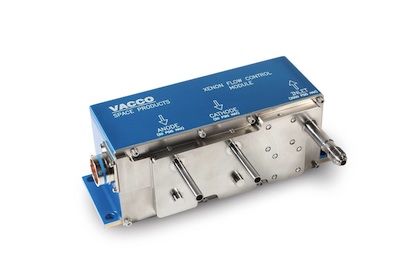
NASA Glenn Research Center
Solar electric propulsion, also known as Ion propulsion, uses electrically charged gas as the propellant instead of chemicals like liquid hydrogen and oxygen.
VACCO has developed a specific website that directly addressed the unique nature and needs of the CubeSat community. If you or someone you know is looking for details about hardware to support your next CubeSat mission, you can visit VACCO's Cubesat Propulsion website here!
Chemically Etched Micro Systems (ChEMS™) is a patented (#6,334,301) VACCO technology for the production of highly integrated fluid control systems using titanium micro-manifolds. Robust construction, compact size and low mass make ChEMS™ ideally suited for space applications, including:
A wide variety of functional components are available that can be combined to form custom ChEMS™ modules, including the following:
One variation of ChEMS™ technology recently qualified for NASA is the Xenon Flow Control Module.
Xenon Flow Control Module (XFCM) is a fully independent subsystem of ChEMS™ designed to accept storage tank pressure at the inlet (up to 200 bar), which provides two independent, filtered, precision xenon flows directly to electric thrusters.
The latest XFCM is configured for a Hall Effect thruster (HET) with one channel providing flow to the anode and the other to the cathode. Features include:

Xenon Flow Control Module
The Xenon Flow Control module was designed for NASA Glenn Research Center to enable the use of electric propulsion for deep space missions.
To learn more about CubeSat Propulsion Systems, please visit www.cubesat-propulsion.com